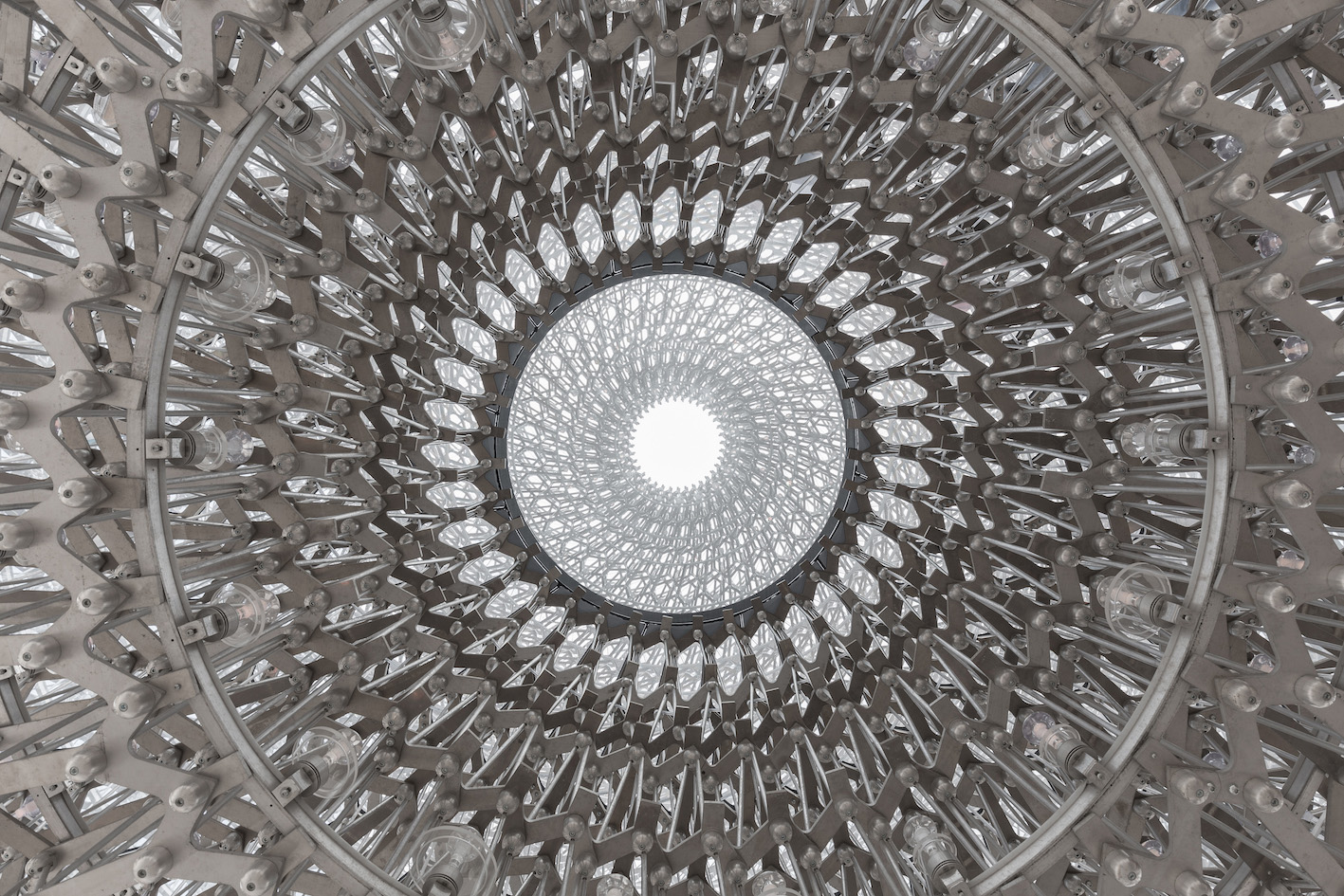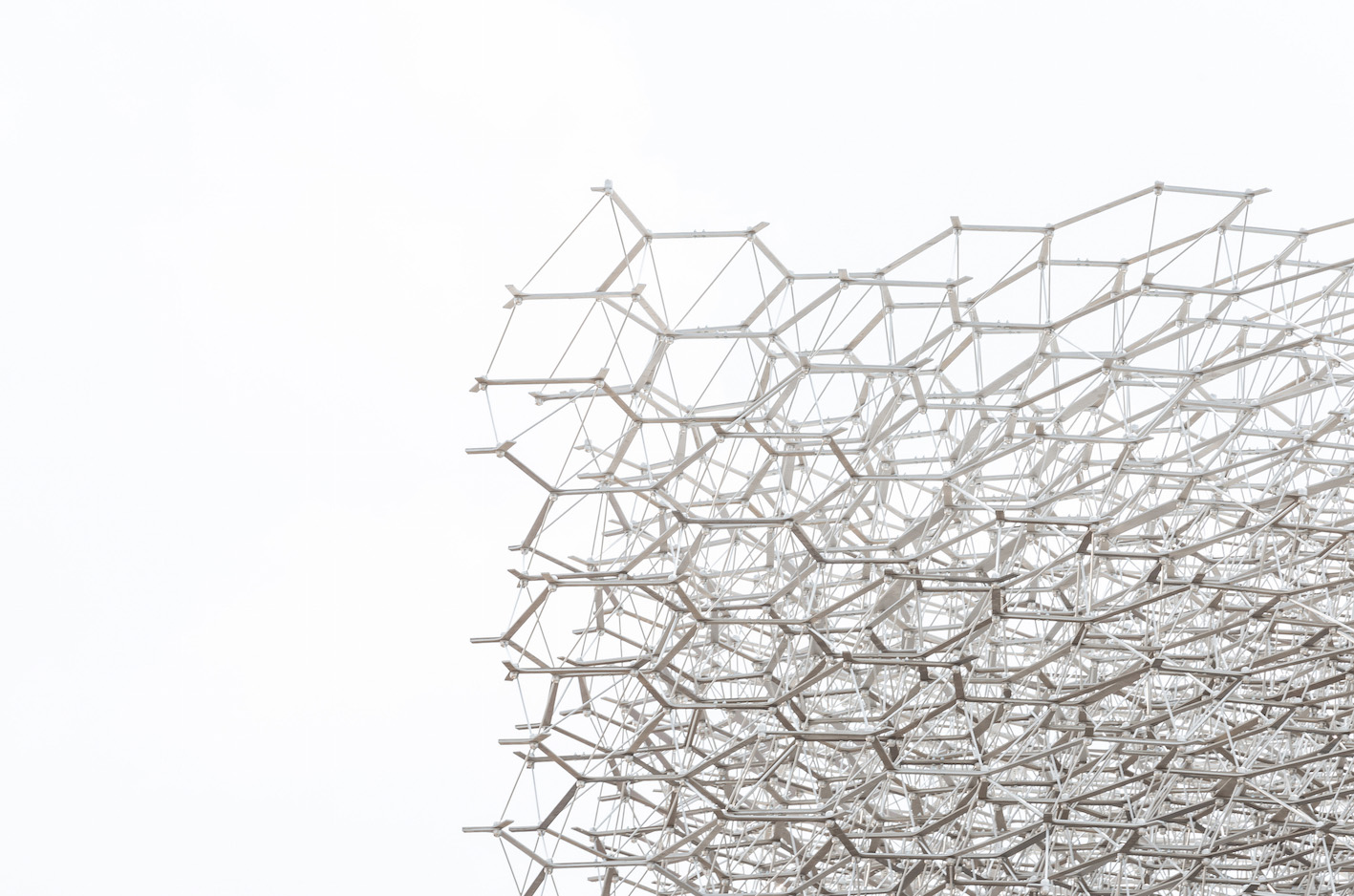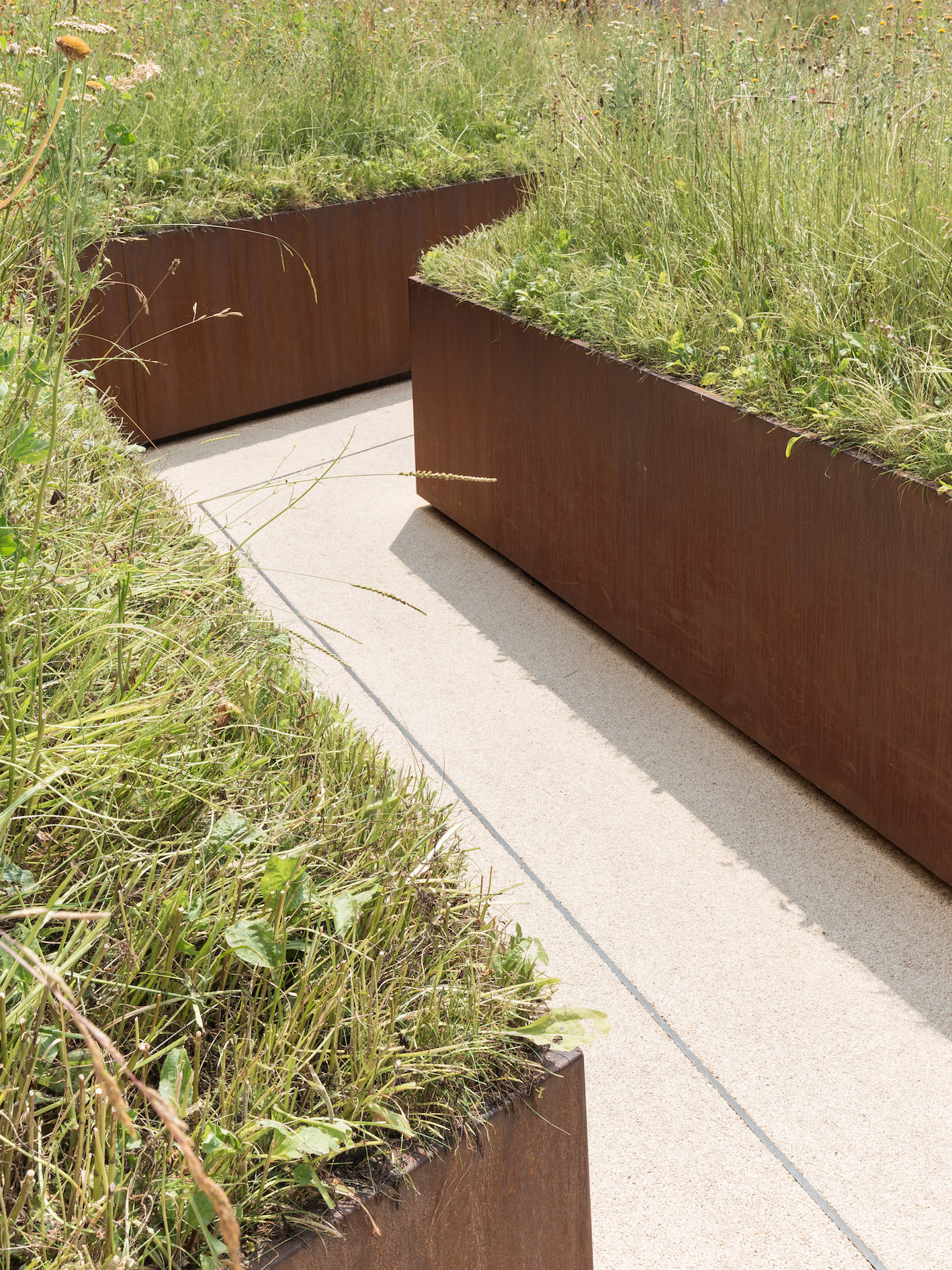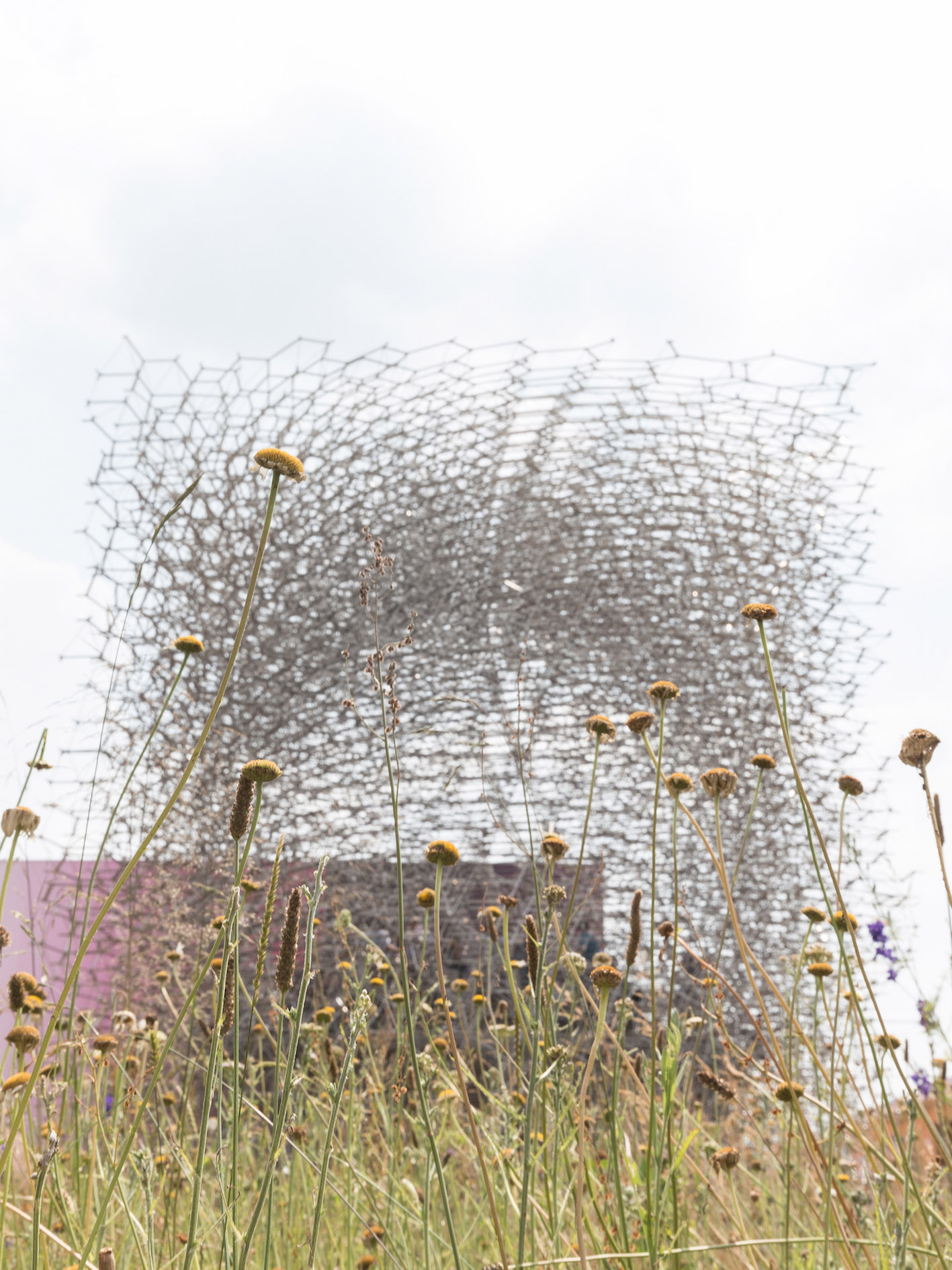9 July 2015
That bees were in the environmental spotlight in Milan was already clear during the Salone del Mobile last April, with the urban hives created by designers and artists for Green Island 2015 at Garibaldi Station and with Francesco Faccin’s Honey Factory installation in the Garden of the Triennale—coinciding with the opening of Expo Milan 2015. The gigantic virtual Hive conceived by the British artist Wolfgang Buttress continues this work of consciousness-raising with an intervention which involves all the senses and has proved to be one of the most successful contributions to the World Fair from the cultural and architectural point of view. The United Kingdom has chosen to distance itself from the simplistic interpretation of the theme of “feeding the planet” that has produced an excessive number of pavilions devoted to promoting the culinary and botanical delights of their respective countries. The UK Pavilion has taken its inspiration from the research of the physicist Martin Bencsik, an expert on hives and their monitoring, to highlight the need to protect bees, whose numbers are falling drastically as a result of pollution even though they remain vital to the functioning of our ecosystem: it suffices to think that 71 of the 100 most important crops on which humanity relies for its food are pollinated by bees. Rather than as a simple hive, the area is conceived as a journey into the world of bees. After passing through a short labyrinth with images illustrating Bencsik’s research, visitors enter an orchard and a meadow of wild flowers planted on terracing located at eye level. Arriving at the transparent base of the great beehive, they are instructed how to listen to the buzzing of the insects. Then comes the moment to climb the stairs and go inside the enormous structure made of aluminum treated at very high temperatures using a special technique that gives the material the pale yellow coloring typical of wax. The shape of this incredibly delicate and light structure —made up of 170 thousand pieces brought from the United Kingdom and assembled on site—is an abstract evolution of a honeycomb. Inside it are located thousands of LEDs that produce the greatest intensity of light in the evening, the time when the creatures return “home” after doing their job of pollination. The visit is made even more realistic by audiovisual effects that reproduce the buzzing of the bees. The experience offered by Hive is a powerful one: the many flickering LED lamps, along with buzzing sounds and vibrations, reproduce the activity of a colony of bees in response to signals transmitted from a real hive in Nottingham. Buttress’s cuboid lattice—which cost six million pounds, was constructed by Stage One and designed in collaboration with the structural engineer Tristan Simmonds, the Manchester-based architecture firm BDP and the creative agency Squint Opera—is innovative and ambitious and is destined to emulate the success of the United Kingdom’s hedgehog pavilion at the Expo Shanghai 2010. The choice of a beehive has symbolic value too: it evokes the metaphor of the country as a place of innovation and creativity, able to absorb, develop and share diversity and wealth coming from the most varied sources and inspirations, as the British ambassador to Rome Christopher Prentice stressed on the eve of the opening. Complementing the British presence at the Expo, the Global Business Programme will be proposing a calendar of initiatives aimed at companies to be staged until the end of October at venues that include Villa Necchi Campiglio and UK House at Palazzo Giureconsulti in the center of Milan as well as the exhibition area.















